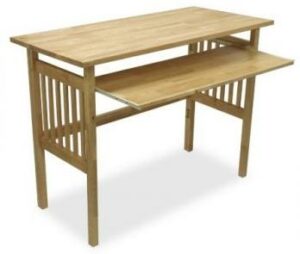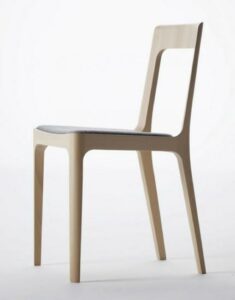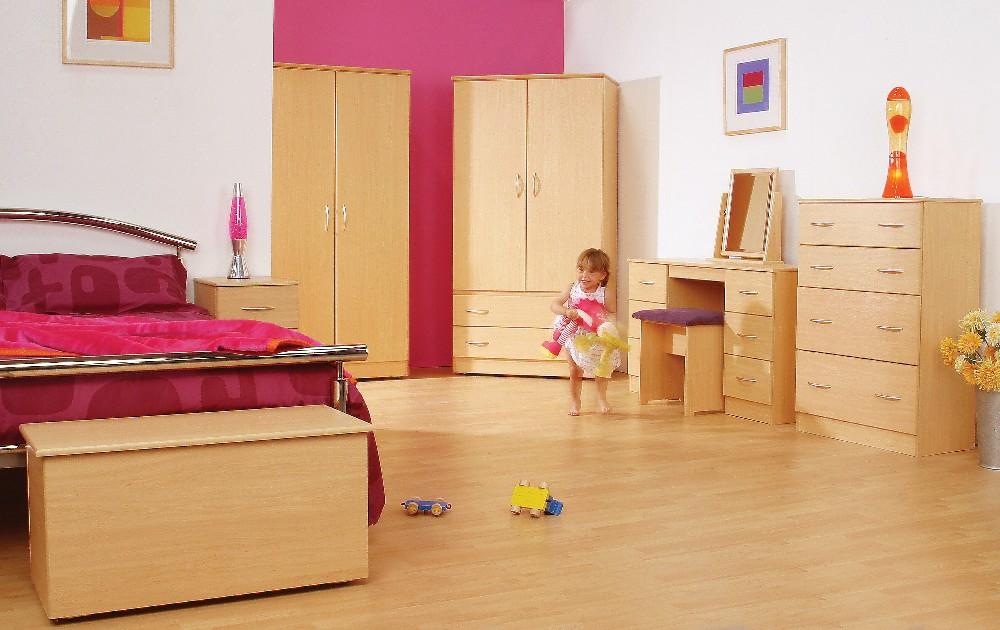
Like basswood, beech is found primarily in the Northeastern part of North America. It’s also found throughout Europe in England, Scotland, France, Germany, Poland, Czechoslovakia, Yugoslavia, Denmark, and Austria. Ikea is one well-known company which sells contemporary beech wood furniture.
It is classified as a medium- to hard wood, making it a good choice for furniture. In homes where allergies or sensitivities to odors are present, solid beech furniture can be a valuable asset. While more resinous woods can have a distinct smell, beech is completely odorless.
Beech furniture is a durable option for children’s rooms, where dent- and shock-resistance is desirable. Properly cured, beech is actually stronger than oak. At the same time, the wood fibers are flexible. Beech is often softened by steaming, and then shaped into elaborate bentwood designs. Once cool and dry, the wood holds its new shape.
Outdoors, or in bathrooms, laundry rooms, and damp basements, beech has a tendency to absorb water and swell. When it dries out again, the wood shrinks. All this movement loosens the joints and compromises the structural integrity of the furniture. The wood itself can also warp or crack. Avoid these problems by only using beech furniture in dry areas of your home: dining areas, hallways, offices, bedrooms, and living areas are all appropriate choices.

Its close grain makes it a good option for turning, so consider beech if you need to replicate a broken leg or missing finial- or if you just want to add decorative elements to a plain piece. When working with beech, always use very sharp tools, and be aware that the density of the wood can cause blades to dull quickly. Power tools are a much more efficient option than hand tools are. Avoid gluing, when possible; nails and screws will create a more secure bond on this type of wood. Pre-drill pilot holes before installing fasteners, to avoid splitting. Mortise and tenon, biscuit, or dowel joints are an even better option for joining sections of beech furniture.
Natural beech wood furniture is pale, almost white to tan in color, and has a tight, even grain. Sometimes, dark variations in color are present in some areas of the wood; many scientists believe that these dark areas develop during very cold winters. Its uniform texture makes it easy to polish to a high shine.
Beech accepts stain very well but can also be left natural (apply a couple coats of oil, wax, or polyurethane to protect the surface.) Many woodworkers prefer to use shellac to finish their beech creations; try blonde shellac to highlight the grain and give the wood a slightly amber tint.
Kids Room Photo Courtesy Mr. Pine and Sons, http://mrpineandsons.co.uk
Naoto Fukasawa Beech Chair Image by DesignAddict.com

